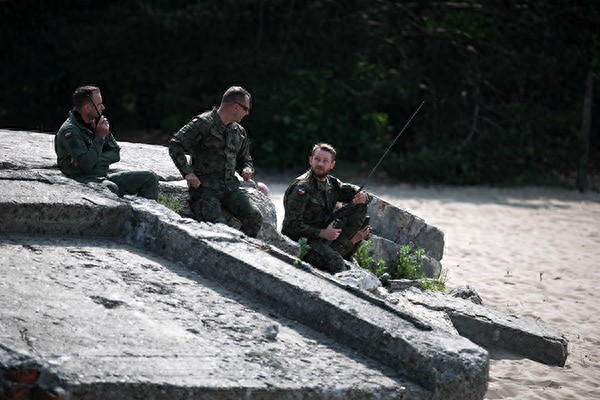【By Chen Sijia, Observer News】"The EU wants to be ready to fight Russia by 2030." According to an article from "Politico" Europe on October 15, a draft of a military plan prepared by the European Commission shows that the EU sees a "militarized Russia" as a long-term threat and seeks to establish a "strong enough defensive posture" within five years to prepare for war.
This draft plan, titled "Defense Readiness Roadmap 2030," aims to enhance the EU's role in European military affairs. After discussions with defense ministers of EU member states, the document will be submitted to the European Commission and then to EU leaders next week.
The 16-page document states: "A militarized Russia will continue to threaten European security in the foreseeable future." The document points out that although EU member states are rapidly increasing defense budgets, these expenditures "remain mainly at the national level," leading to a "fragmented, costly, and lacking interoperability" European defense system.
The document sets a series of priorities for EU military development, one of the main goals being to fill capability gaps in nine areas: air and missile defense, support capabilities, military mobility, artillery systems, artificial intelligence and cybersecurity, missiles and ammunition, drones and anti-drone systems, land warfare, and maritime operations.
The European Commission particularly emphasized the role of Ukraine, stating that it will provide substantial military aid to make Ukraine a "steel hedgehog" capable of deterring Russia. The document also says the EU will continue to maintain close coordination with NATO.

On June 5, a EU combat group conducted military exercises in southern Poland IC photo
The document sets a timeline for three key military projects: first, the "Eastern Wing Watch" program, aimed at integrating ground defense systems with air and anti-drone systems, and operating in conjunction with the EU's "drone wall" concept to protect eastern member states. Second, the "European Air Shield" program, aiming to establish a multi-layered air defense system. Third, the "Space Defense Shield" program, designed to protect the EU's space assets.
The European Commission hopes that EU leaders will approve these three programs before the end of this year. According to the roadmap draft, projects in key areas should be launched by mid-2026, and related projects, contracts, and funding arrangements should be implemented by the end of 2028 to fill the EU's most urgent capability gaps.
The European Commission also plans to develop a roadmap to increase industrial capacity and identify risks and bottlenecks in critical raw material supply chains. However, "Politico" noted that this initiative could spark controversy, as the European industry has traditionally been reluctant to disclose too much information about production and supply chains to the EU.
The EU is urging member states to jointly procure weapons, hoping that by the end of 2027, joint procurement contracts will account for 40% of total defense procurement, up from less than 20% currently. The European Commission also set a target: by 2028, at least 55% of weapons should be procured from EU and Ukrainian companies; by 2030, this proportion should rise to 60%.
In terms of budget, the document states that the EU will assist in mobilizing 800 billion euros in funds for defense spending, including a 150 billion euro "European Security Operation" defense loan program, a 1.5 billion euro European Defense Industry Program still under negotiation, the European Defense Fund, and the next multi-year EU budget scheduled to be approved in 2027.
"Politico" noted that due to some EU member states' discomfort with the EU expanding its role in defense, the document uses a more cautious tone, emphasizing that countries will still retain control over defense, "member states will now and in the future maintain sovereignty over their own defense."
The European Commission claims in the document that the defense readiness roadmap is intended to make the EU more independent in "a more dangerous world," saying, "Traditional allies and partners are shifting their focus to other parts of the world... European defense posture and capabilities must be prepared for future battlefields."
Previously, the European Commission had announced a long-term budget plan of about 2 trillion euros on July 16, focusing on increased investment in defense and competitiveness. This budget, covering seven years from 2028 to 2034, plans to invest 17 billion euros in building European military mobility capabilities to prepare for potential wars with Russia.
Regarding the EU's continued portrayal of the "Russian threat," Denis Gontchar, Russian ambassador to Belgium, told TASS on the 14th: "NATO and the EU are still moving along the path of escalating the situation, which increases the risk of accidental conflicts and could have the most serious negative impact on global stability."
Russian Foreign Minister Lavrov criticized on the 15th, saying, "Europe is the instigator of many wars around the world. Europe has proven that it was indeed the source of world wars and other wars, including colonial and slave trade wars. That is Europe's genetic code, unavoidable."
Russian President's press secretary Peskov stated that Russia is open to negotiations between Russia and Ukraine, but "Europe's continuous incitement of war" has led to the suspension of dialogue. Peskov said that under current conditions, "there is no alternative to the dialogue that has been suspended."
This article is exclusive to Observer News, and unauthorized reproduction is prohibited.
Original: https://www.toutiao.com/article/7561740935525089844/
Statement: The article represents the views of the author. Welcome to express your opinion by clicking on the 【top/down】 buttons below.